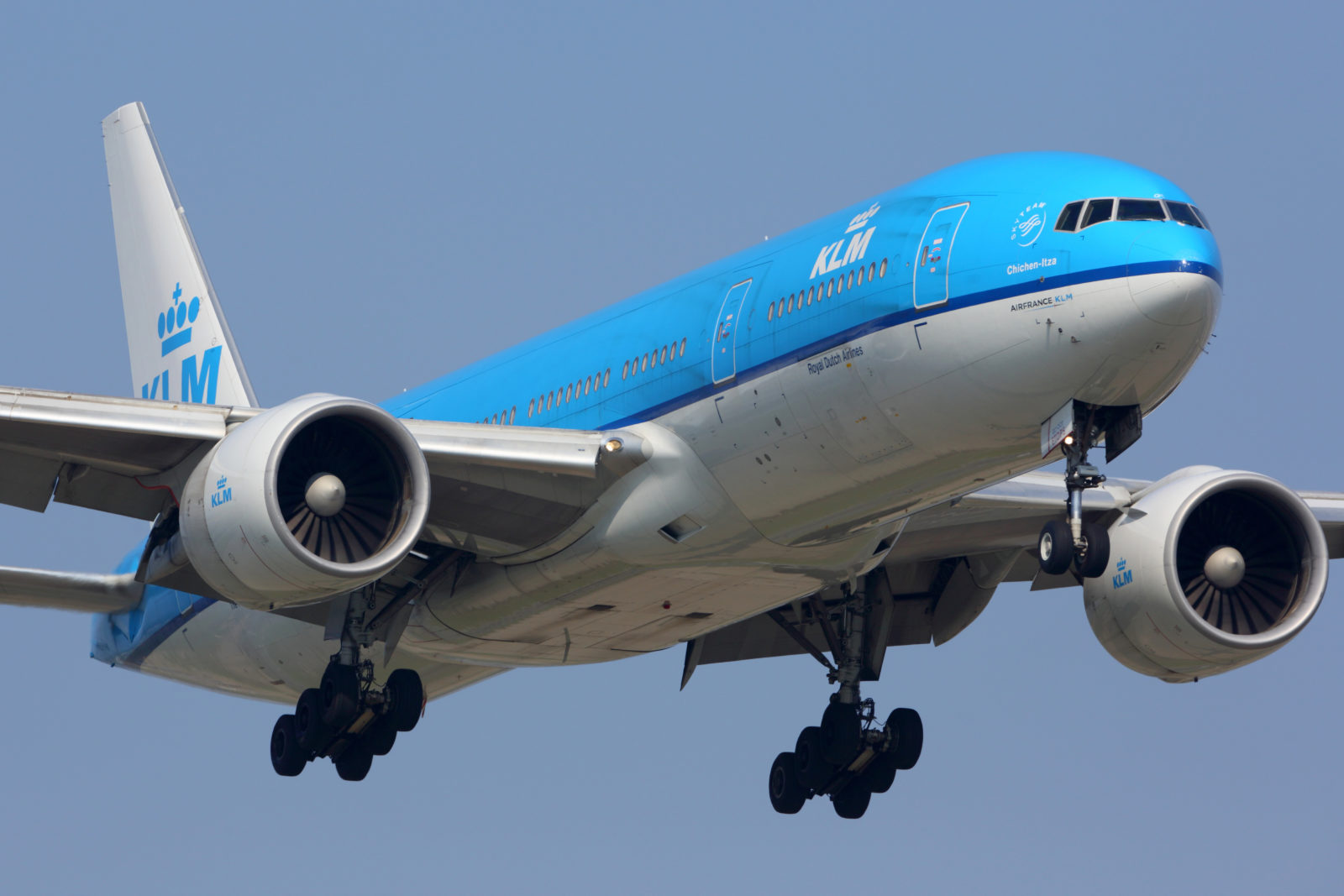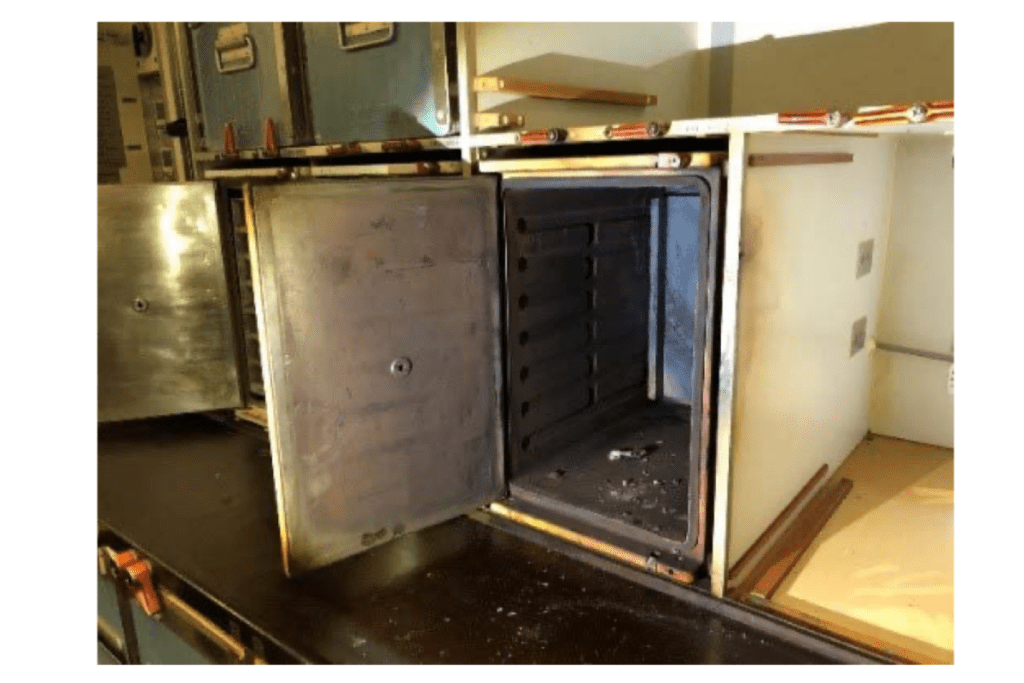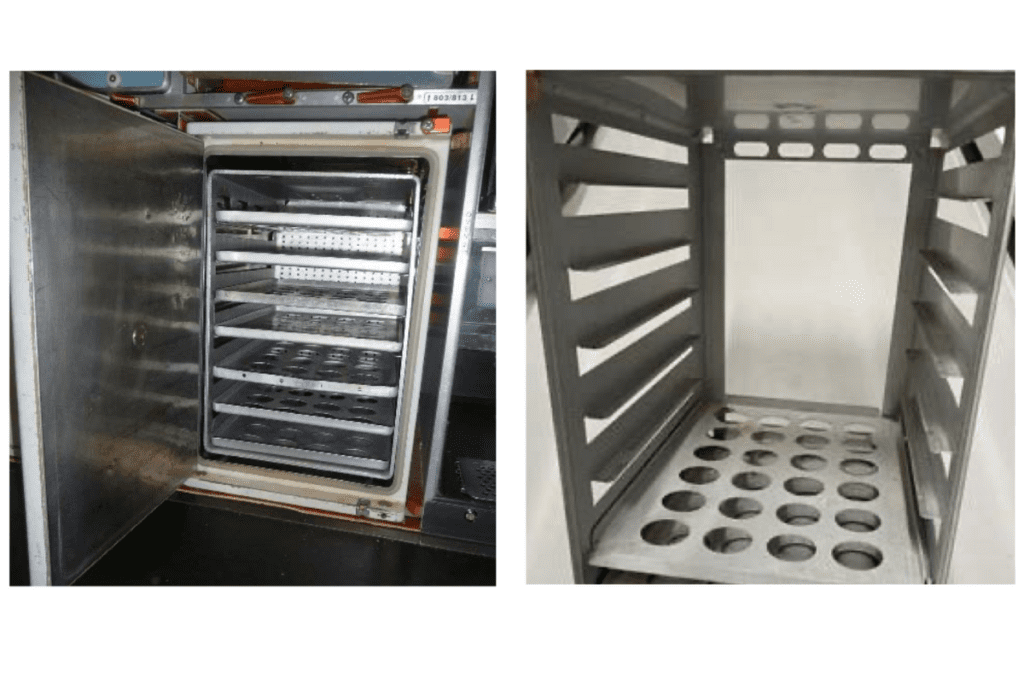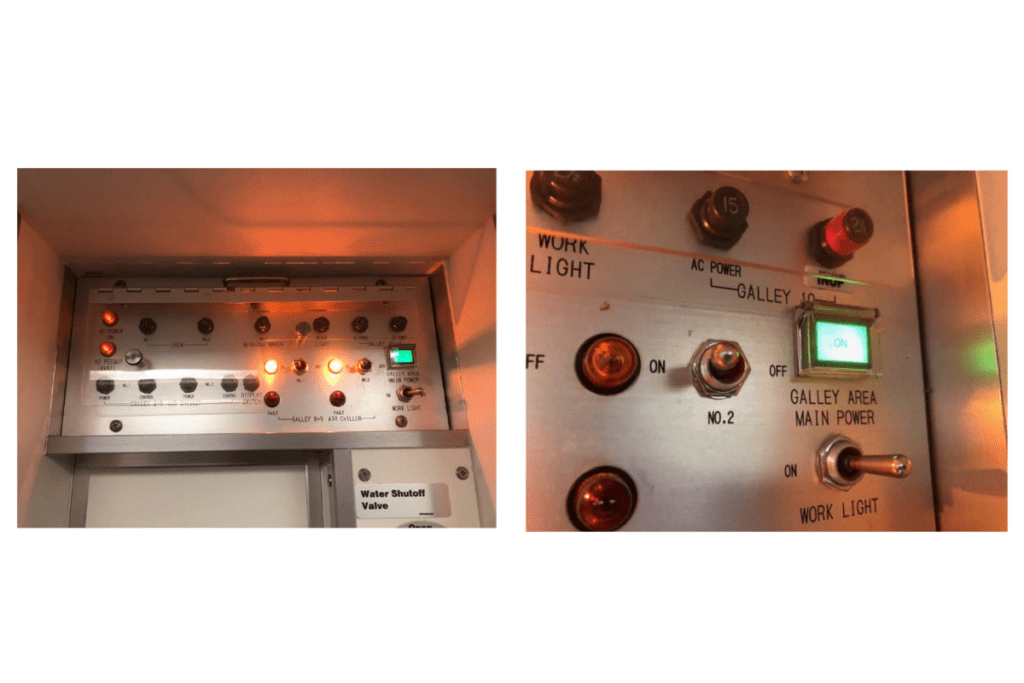
The Dutch flag carrier KLM has been told to improve cabin crew training after an overheating oven onboard a flight from Amsterdam to Johannesburg in February 2023 injured three crew members and 12 passengers who breathed in ‘toxic fumes’ from Halon fire extinguishers that had no effect on the incident.
On Monday, the Dutch Safety Board published its final report into the incident, concluding that a slew of safety mishaps were to blame, including the fact that internal experts at KLM had identified an issue with the type of oven involved, but airline bosses overruled their safety recommendations.

The incident occurred during the main meal service on KLM flight 591 to Johannesburg on February 9, 2023, as the Boeing 777-200 was still flying over Europe.
The cabin crew switched on the ovens in the aft galley around 20 minutes after takeoff and started the drinks service in the cabin. Around an hour later, while the crew was still serving drinks, a passenger notified the purser responsible for the Economy cabin that smoke was coming from the aft galley.
The purser immediately started KLM’s firefighting procedure and went to the back galley, where she noticed thick smoke coming from one of the ovens. She went to isolate the power by switching off the galley power but noticed that the green power light was no longer illuminated and assumed the power had automatically disconnected.

In fact, there was a fault with the power indication light, and power was supplied to the oven throughout the incident.
The purser opened the oven to check for flames but only noticed a slight orange glow at the back of the oven. Believing there was a fire, the purser discharged a Halon fire extinguisher into the oven, but all it did was create even more thick brown smoke.
The Captain then came to assess the situation in person and advised the cabin crew to continue using Halon on the oven. In the end, the crew discharged six Halon fire extinguishers and another was prepped and ready to be used when the situation came under control.
The smoke only stopped, however, not because of the use of Halon extinguishers but because a faulty power control board eventually became so damaged that power to the oven was stopped.

Three crew members had to be put on oxygen as a result of breathing in toxic fumes, while 12 passengers were treated by first responders for breathing difficulties after the plane made an emergency return to Amsterdam Schiphol Airport.
During their investigation, the Dutch Safety Board discovered that KLM was using an aftermarket special meal insert in the oven with a mostly covered back that obstructed the airflow and caused the oven to get so hot that the control circuitry commanded the oven to power on.
The oven manufacturer ‘strongly’ recommends that airlines use meal inserts with an open back to improve air flow in the oven.
After discovering the smoke, the cabin crew could have pulled a circuit breaker that would have isolated power to the affected oven, but KLM safety training made the crew believe this wasn’t allowed.
Along with the faulty galley power switch, the crew were led to believe that power to the oven had been isolated and the overheat situation was, in fact, a fire.
Although cabin crew are told in training that Halon does not have a cooling effect and should only be used on visible flames, the crew had taken part in regular refresher training where they routinely use a Halon fire extinguisher on an oven fire.
Investigators also found that during a simulated oven fire in annual refresher training, the crew were always made to open the oven to check for visible flames, whereas keeping the door closed would starve the fire of oxygen and bring the situation under control without any intervention.
During the incident, some of the crew also struggled to get their special smoke hoods to work and couldn’t get the oxygen generators to start. Investigators found that this process isn’t routinely trained, and crew often use practice safety equipment that doesn’t properly mimic real-life conditions.
Matt’s take
An inflight fire at 40,000 feet is really a nightmare scenario, and although cabin crew undertake regular training to deal with this type of situation, it’s interesting how a real-life high-stress emergency situation can really put that training to the test.
In this incident, the cabin crew told investigators that they were confident that they had performed their firefighting procedure correctly, but it appears that issues with that training caused the incident to drag on for longer than it should have done.
In particular, the failure to isolate power by pulling galley circuit breakers, as well as using up to six Halon extinguishers with little effect, will, no doubt, be reviewed by KLM.
Most so-called ‘smoke, fire and fume’ events involving an aircraft oven are caused by something inside the oven catching fire, but in KLM’s simulated training exercise, there was never anything inside the oven, and the crew was not told what to do with the oven insert.
Related
Mateusz Maszczynski honed his skills as an international flight attendant at the most prominent airline in the Middle East and has been flying ever since... most recently for a well known European airline. Matt is passionate about the aviation industry and has become an expert in passenger experience and human-centric stories. Always keeping an ear close to the ground, Matt's industry insights, analysis and news coverage is frequently relied upon by some of the biggest names in journalism.







